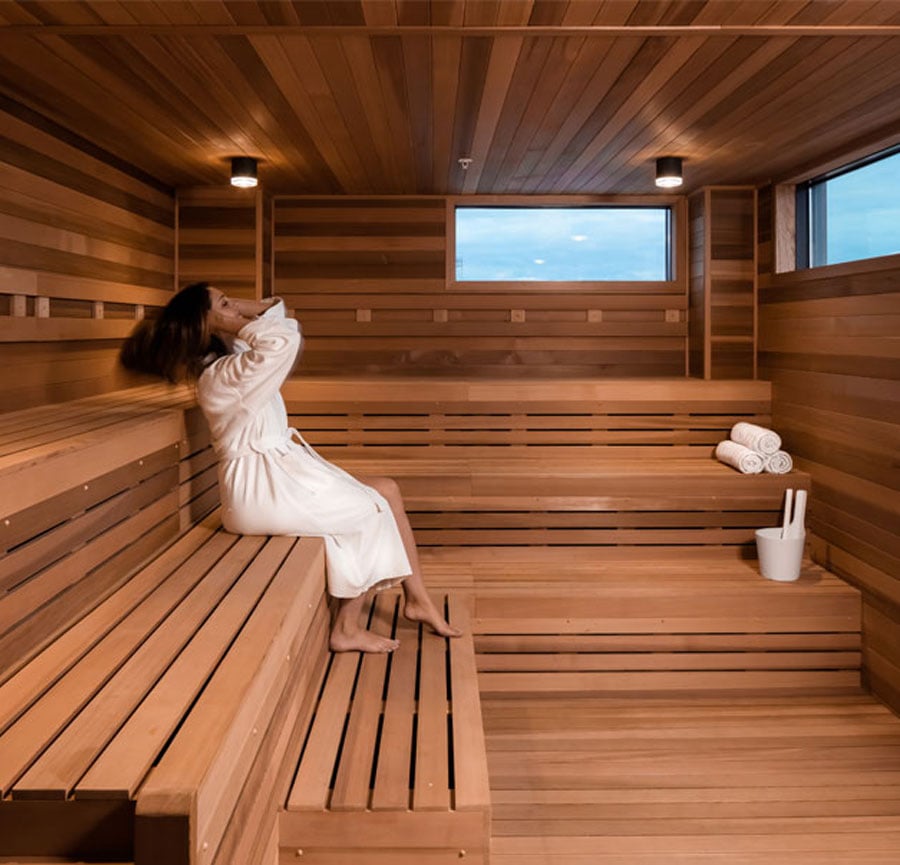Traditional Sauna for Beginners
Traditional Sauna for Beginners
Blog Article
Traditional Sauna Fundamentals Explained
Table of ContentsThe 7-Second Trick For Traditional SaunaThe 6-Minute Rule for Traditional SaunaSome Known Facts About Traditional Sauna.Some Known Details About Traditional Sauna The Single Strategy To Use For Traditional Sauna
A lot of the weight lost in a sauna is water loss and is re-gained upon rehydrating. Nonetheless, undeniably sauna can be an integral part of a healthy fat burning program. To look at the differences in between typical and IR saunas, I will certainly divide these right into proven, academic, and made distinctions.Hence, the most popular factor in the saunawhich goes to the ceiling straight above the sauna heateris generally in between 185 and 190 F. Claims that a typical sauna surpasses 200 F is simply not real and not suitable for electrical saunas offered in the US. The temperature for a far-infrared sauna is typically set between 120 and 140 F; nonetheless, unlike the conventional sauna, the goal in and IR area is not to attain a heat.

When a traditional sauna has actually been effectively heated up, the sauna walls are warm, the air temperature level has achieved set temperature level and the rocks are incredibly heated. As an intriguing side note, the heated walls and the rocks are releasing far-infrared heat, incorporated with the heated air, to create an "covering warmth".
Traditional Sauna for Dummies
When the heat is achieved, the elements cycle on and off to maintain the heat. A lot of typical sauna users take pleasure in putting water over the rocks to develop steam to elevate sauna humidity levels. The advantages of putting water over the rocks consist of: making the space much more comfortable, dampening the nasal passages, and allowing the use of aromatherapy by mixing necessary oils with the water.

When the power goes into the body, it triggers the body temperature to boost and inevitably results in sweat. In an infrared sauna it is very important for the emitters/heaters to continue to be on practically regularly. Considering that there is no mass of rocks to maintain warm, the sauna will cool if the emitters shut down.
The Best Strategy To Use For Traditional Sauna
As discussed over, the sauna bather in an infrared space wishes to position himself before operating emitters to obtain maximum advantage from the warmth. The heating time for both spaces can be extremely different, relying on exactly how the areas are utilized. For a standard sauna, a bather needs to enable 30-40 minutes for the space to achieve a wanted temperature and to effectively pre-heat the rocks.

A well built sauna will commonly accomplish a temperature level of 150-160 F in about 30-40 mins (Traditional Sauna). For hotter temperatures, the area may need to warmth for a longer period. As soon as the space attains set temperature, the heater will certainly cycle on and off, typically operating about 50% of the time. The insulated walls and the warmed rocks will keep the space warm and at steady temperatures.
To some, 15 minutes was "squandered" while the infrared energy warmed the wood panels instead of heating a body, while others discover a pre-heated area to be a lot more comfy and think a raised starting temperature level is necessary to begin perspiring. The length of suggested usage for each and every area is approximately the very same (10-15 mins per session); nonetheless, due to the reduced air temperatures and the capacity to really feel the impacts of infrared Learn More warm quicker than a traditional sauna, it is not unusual for an individual to spend a total of 20-30 minutes in an infrared sauna.
The Single Strategy To Use For Traditional Sauna

The ordinary price per kWH of power in the U.S. is approximately $0.11, so a 4.5 kW heating system will certainly cost around $.50 to compete one hour, if the heater runs continuously for one hour. Usually a sauna heating system will certainly compete 75% of the initial hour and 50% of subsequent hours on considering that the components cycle once the established temperature level is accomplished.
A two individual far-infrared room is typically physically smaller why not try here sized than a standard sauna, frequently about 4' x 4' or smaller. The IR heater is usually 1.5-1.7 kW making use of a 120 volt 15 amp plug-in solution. Because the area can be used sooner than a sauna space, we will certainly assume the area is made use of for to of an hour including heat up time.
There is a seldom talked about difference in the social experience between the two rooms. While our society has actually shed a few of the social benefit of the typical sauna experience, it can be really socially satisfying (Traditional Sauna). From family members time in the sauna, to heart-felt discussions with why not find out more better halves, to sauna partiesthe traditional sauna experience can result in intimate interacting socially
The Best Strategy To Use For Traditional Sauna
The majority of greater end infrared rooms include colored light treatment, noise systems and full-glass fronts. The size of most spaces permit 2 people to comfortably make use of the space, while some designs might enable a third or fourth individual to utilize the room. Custom infrared areas are also available, with room dimensions offered approximately 7' x 8' x 7' high.
Report this page